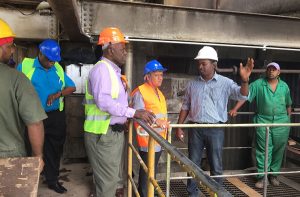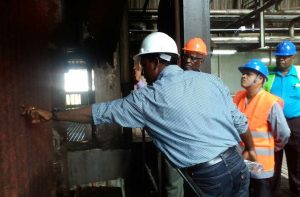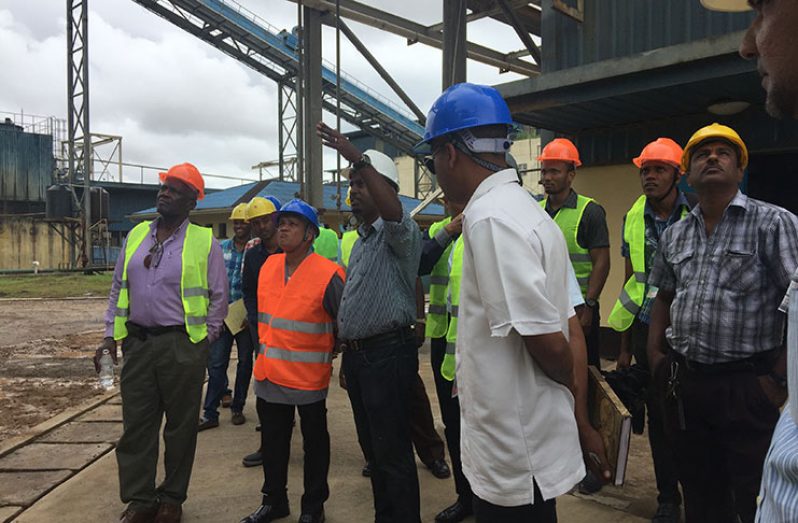JUNIOR Finance Minister, Jaipaul Sharma, is of the view that the creation of Skeldon Energy Inc (SEI) on All Fool’s Day was a ploy by the previous administration to deceive the populace of the humongous problems with the Skeldon factory.
According to Sharma, the People’s Progressive Party (PPP) Government, which was in power at the time, knew fully well that some US$20M or $4B was needed to fix the problems with the troubled factory.

“This creation of SEI started in February of 2015 and concluded on All Fool’s Day, 1st April, and I don’t know if it was meant to fool the people, it was election, preparation for election and I don’t know what was the thinking of the government but they knew they were in trouble, GuySuCo was in trouble,” he told reporters Friday.
Sharma said the previous administration wanted to bail out GuySuCo but kept it a secret due to the elections and decided to liquidate the plant through NICIL and GPL to show the money went to GPL.
“Basically what the previous administration was doing was indirectly bailing out GuySuCo without the public knowledge. They knew if the co-generation plant remained in GuySuCo’s portfolio, they would have to find US$20M (G$4B) to deal with it. They didn’t want that going on GuySuCo books so they found ways and means to use NICIL and GPL to basically bail them out. So you didn’t see them going to Parliament and asking for a supplementary.”
The minster explained in the quest to mask the population of the state of the industry, the previous administration made a deal that left SEI indebted to this date. He also explained that the use of Heavy fuel oil (HFO) further compounded the amount of the debt and led to an accelerated deterioration of the co-generation plant’s boilers.
HFO FUEL Sharma pointed out that the plant was worth US$30M and the equity would have been US$5M from NICIL and US$4M from GPL; however, there were some issues with electricity supply in Berbice and the previous administration forced GuySuCo to generate the power to meet this demand by use of HFO to avoid a possible election shortfall.
In that deal, GPL supplied the HFO to the tune of approximately US$3-4M, taking the total debt of the company to US$13M plus.

The management of SEI had explained that by design, the co-generation plant is supposed to be powered mainly by bagasse and can use HFO as a startup measure only in small quantities.
But extended use of HFO as was previously done caused the tubes of the boilers to wear a lot faster.
The minister stated that he had an opportunity to look at the business plan and projections that SEI did and from what he saw SEI is a viable company that can be profitable.
He even noted that the chairman of GuySuCo had stated that he wanted the co-generation plant back under GuySuCo since he knows of its potential.
The management of SEI has made it clear that they are in the process of negotiating a power purchase agreement. They stated that the initial rates at which the company was paid were heavily subsidised to such an extent that it was much lower than the cost of production.
Upon the formation of SEI, this was changed and the company was paid a higher rate; however, that rate is still being sold below market value and would have to be re-negotiated.
FINANCIALLY VIABLE
Based on this move alone, the company feels it will become more financially viable. SEI Chairman Lloyd Rose said the company is capable of securing its own funds for the complete overhaul needed to have the plant function to full capacity.
The company had indicated as a stop gap measure, it is investing US$2.5M to make the plant operational by the end of August.
And, it will then spend a whopping US$17M from January 2018 to effect a complete rehabilitation of its facilities. This rehabilitation work is expected to be done over a three-to-four-month period.
The SEI said the US$200M Skeldon project, the country’s biggest investment, has found itself in a perilous state due to poor design, poor management, lack of training and oversight.
According to Rose, the pinhole boiler is not suited for local conditions as he explained its deterioration in a short period of time.
“We have found here, the type of grate we have here is being overwhelmed by the amount of ash obtained from the actual outturn, simply because of the amount of sand, mud and silt that comes in with the canes after a brief rainfall even during the dry season.”
Rose said the conditions under which the canes come in cannot be changed. Even though workers have tried, the pinholes become blocked due to the excessive ash content, making normal operations difficult and requiring more maintenance.
This, he said should have been considered in the initial design stages to avoid the current situation.
Meanwhile, Sharma also noted that it is no secret government has received non-solicited interests for the Skeldon factory by both local and international companies, and the co-generation plant would be a key component of any deal to divest the estate.
That being said, the minister advised the board to move ahead with their plans until told otherwise.



.jpg)










